Early Linear Array Ultrasound
System (ADR)
Eric Blackwell, M.D.
In the early days of diagnostic ultrasound
it was hard to predict just exactly what background might have led people
to become involved in the ultrasound field. Jim Binns, pictured below
with one of the first working prototypes of the Advanced Diagnostic Research
(A.D.R.) linear array real-time ultrasound scanner, was (if memory serves
me correctly) a graduate of Harvard Law School. In the mid 1970's
he was travelling around the country demonstrating the unit (he later became
CEO of A.D.R.). Notice in the detail view of the transducer
the slightly irregular alignment of the 64 transducer elements epoxied
into the hand-made transducer! This was the first scanner available
to us at Bowman Gray with real-time imaging capability. It made it
much easier to "track" a moving fetus so that optimal head and body measurements
could be obtained. The ADR 2130 had its "roots" in this prototype.
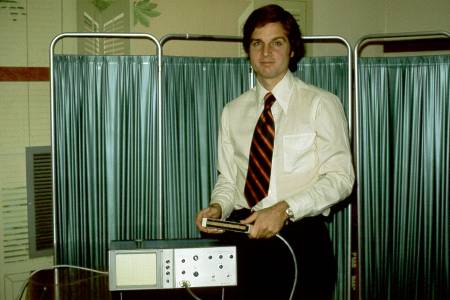 ***
*** 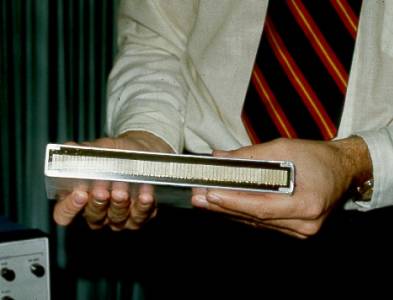
Photos by Eric Blackwell,
M.D. made about 1974 at the Bowman Gray School of Medicine Ultrasound Laboratory
in Winston-Salem, N.C.
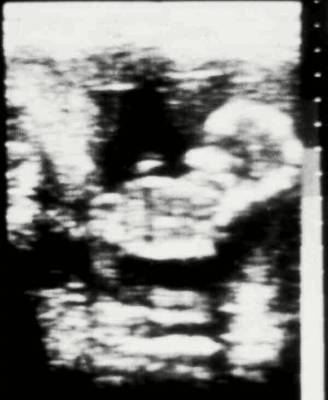 ***
*** 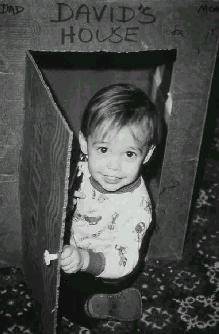
11-12 week fetus (and
my first child, David) scanned with an early ADR linear
array scanner (left)
and a few years later (right!)
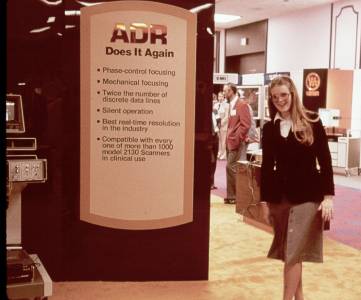
By 1978 (the AIUM meeting in San Diego) ADR had more than 1,000 model
2130
scanners in use. Seen here at the ADR display at the convention
is Patricia Bealefield,
one of my two first sonographers, who had gone to work for ADR as an
applications
specialist.
Page Last Updated 10/13/2000
 Return
to Introductory Page
Return
to Introductory Page
 ***
*** 
 ***
*** 
